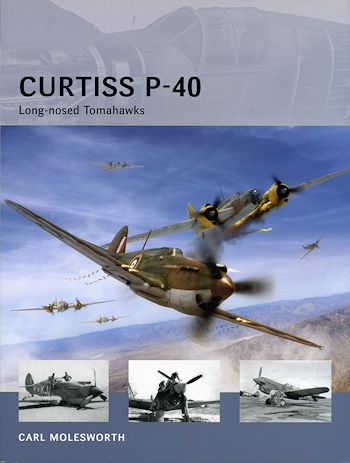 It is
an old adage that one goes to war with the weapons one has and such was the case
of the P-40. Though there were better aircraft in the pipeline, they were not
ready for prime time and would not be for several years. So it fell on what the
USAAC had on hand to fight WWII and when it came to fighters that meant obsolete
P-26s, obsolescent P-36s and more modern P-39s and P-40s.
It is
an old adage that one goes to war with the weapons one has and such was the case
of the P-40. Though there were better aircraft in the pipeline, they were not
ready for prime time and would not be for several years. So it fell on what the
USAAC had on hand to fight WWII and when it came to fighters that meant obsolete
P-26s, obsolescent P-36s and more modern P-39s and P-40s.
Curtiss had built up an enviable record of supplying the US Army with
fighters with its very successful Hawk biplane series and had a firm hold on
things. It was only be chance that the P-35 won a late 1930s order as the
competing P-36 wasn't ready. For the next year's order, the P-36 was ready and
was ordered in fairly large (for the late 1930s) numbers. It was also ordered by
the French in considerable numbers to be ready for the Luftwaffe in WWII. The
British also ordered P-36 versions and while not quite up to being able to
handle the Germans, was very useful against the Japanese in India, but that is
another story. Other nations also bought P-36 (Hawk 75) variants.
Fortunately, the P-36 was designed with stretch and the best way to
improve performance in an airplane is with more engine power and streamlining.
Thus was born the P-40 (Hawk 81) which used most of the P-36 airframe with a more powerful
Alison liquid cooled engine. It is this version of the P-40 that saw the first
considerable action involving this Curtiss fighter.
A few things about this early P-40 (called Tomahawk) by the British). It
was most effective at lower altitude thanks to no really good supercharging
being available. It was fairly maneuverable, but its real strength was in its
ability to dive and absorb punishment. Those pilots successful with the aircraft
used hit and run tactics as a dog-fight was usually unsuccessful. The British
used the airplane with success in North Africa, it was also able to get some
Japanese planes at Pearl Harbor, but the most famous of the type was with the
AVG or the Flying Tigers. They were faced with Ki-27 and Ki-43 aircraft, both
more maneuverable than the P-40, but both slower as well.
This book covers the background history and development of the early
P-40 as well as its combat use in the early years of the war (basically 1941 and
1942). The author calls them 'long nose Tomahawks' (which is a bit redundant as
all the 'long nose' planes are Tomahawks), but that is the first time I have
ever heard these planes called 'long nose' P-40s. Most of us who are
knowledgeable in the aircraft just call them P-40B/C or Tomahawks. With the
coming of the improved P-40D/E and later versions, the name changed to Warhawk.
Anyway, the story is quite well told and the book is full of some great
period photographs as well as some very well done art work. A full 18 of the 64
pages are devoted to specifications of every variant from the Hawk 75 prototype
to the Tomahawk IIB. In all it is a well written book and one that every
enthusiast of the P-40 will enjoy.
June 2013
For more on the complete line of Osprey books,
visit www.ospreypublishing.com. In the US, it is
Osprey Direct at 44-02 23rd St, Suite 219, Long Island City, NY 11101., where you can
get a catalogue of available books.
If you would like your product reviewed fairly and
fairly quickly, please
contact
the editor or see other details in the
Note to
Contributors.
 It is
an old adage that one goes to war with the weapons one has and such was the case
of the P-40. Though there were better aircraft in the pipeline, they were not
ready for prime time and would not be for several years. So it fell on what the
USAAC had on hand to fight WWII and when it came to fighters that meant obsolete
P-26s, obsolescent P-36s and more modern P-39s and P-40s.
It is
an old adage that one goes to war with the weapons one has and such was the case
of the P-40. Though there were better aircraft in the pipeline, they were not
ready for prime time and would not be for several years. So it fell on what the
USAAC had on hand to fight WWII and when it came to fighters that meant obsolete
P-26s, obsolescent P-36s and more modern P-39s and P-40s.